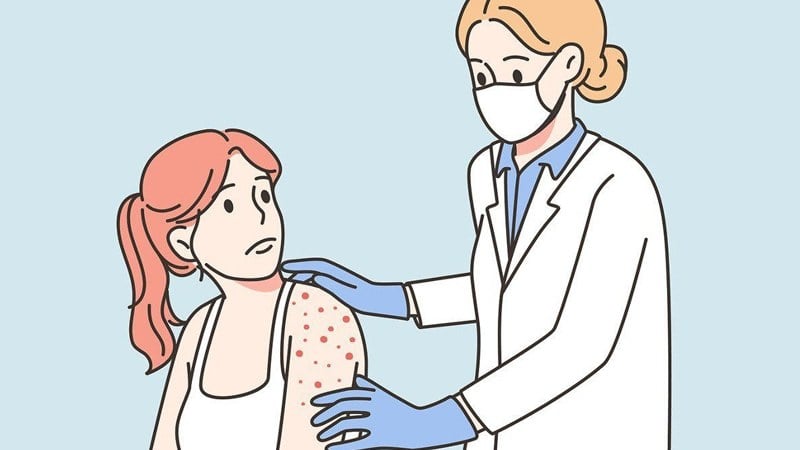-
Jasmine Hunjan (Columnist)
If you aspire to pursue a career as a dermatology nurse or are interested in dermatology nursing, read more as we delve into their various work settings, essential responsibilities, salaries, and the steps to becoming one.
What Is Dermatology Nursing?
Recognizing that skin is the biggest organ that impacts patients, dermatology nurses care for patients with skin injuries, disorders, and wounds such as eczema, skin cancer, rashes, hair loss, and psoriasis.
Caring for their patients includes educating them on their skin issues and supporting dermatologists with procedures. They also provide care to patients undergoing cosmetic procedures.
Work hours vary based on the clinical setting. For instance, nurses in inpatient burn units may work any shift, including weekends, whereas a cosmetic nurse may only work weekday shifts.
Related: Best Registered Nurse (RN) Jobs and Salaries in 2023
Dermatology Nurse Work Settings
Depending on their scope of practice, dermatology nurses can be found working in various healthcare settings, including:
- Dermatology Clinics
- Hospitals
- Academic Medical Centers
- Cosmetic Dermatology Centers
- Dermatological Surgery Centers
- Research and Clinical Trials
- Telehealth
- Dermatology Outreach Programs
It's important to note that the specific work settings for dermatology nurses may vary based on geographical location, healthcare system, and individual preferences. Some dermatology nurses may have the flexibility to work in multiple settings or transition between different settings throughout their careers.
Benefits of Dermatology Nursing
- Regular work hours provide stability
- Rewarding feeling of helping patients improve their self-esteem
- Low risk for burnout as patients generally have more favorable outcomes compared to other fields in nursing like trauma or critical care units
- Cosmetic or plastic surgery settings may have higher salaries compared to those working in non-dermatology settings
- Fewer emergencies depending on the work setting (except burn units or plastic surgery departments), leading to a low-stress environment
Dermatology Nursing Responsibilities
Being a dermatology nurse includes the following responsibilities:
Skin Assessments: Conduct thorough assessments of patients' skin conditions, including evaluating symptoms, conducting examinations, and documenting findings. This involves inspecting the skin for abnormalities, rashes, lesions, or signs of infection.
Patient Education: Educate patients and their families about skin conditions, treatment options, preventive measures, and general skin care practices. This includes guiding proper skincare routines, sun protection, and managing specific skin conditions.
Treatment Planning: Collaborate with dermatologists and other healthcare professionals to develop comprehensive patient treatment plans. This may involve prescribing medications, topical treatments, or recommending lifestyle changes to manage and improve skin conditions.
Perform Procedures: Administer dermatological procedures such as biopsies, wound care, suture removal, and cryotherapy (freezing of skin lesions), and assist with cosmetic procedures like laser treatments, chemical peels, or injectables.
Dermatological Testing: Conduct and interpret diagnostic tests such as skin cultures, patch tests, or allergy tests to aid in diagnosing and managing skin conditions.
Supportive Care: Provide emotional support to patients dealing with chronic skin conditions and address any concerns or anxieties related to their condition and treatment. Offer resources and referrals to support groups or specialized services if needed.
Follow-up and Monitoring: Schedule and conduct follow-up visits to monitor patients' progress, assess treatment efficacy, and make necessary adjustments to the treatment plan. This includes tracking and documenting changes in skin conditions and updating medical records.
Collaborate: Work closely with dermatologists, other healthcare professionals, and support staff to ensure coordinated care and effective communication regarding patient management, treatment plans, and referrals.
Patient Advocacy: Advocate for patients' needs, ensuring they receive appropriate care, access to necessary treatments, and support services. This may involve coordinating referrals to specialists or assisting with insurance or financial considerations related to dermatological care.
Dermatology Nurse Salary
According to the Bureau of Labour Statistics (BLS), the median annual wage for RNs working in the U.S. was $77,600 in May 2021. Salaries may vary depending on the following:
- Location
- Experience
- Level of education
- Certifications
The Top Paying Cities for Dermatology Nurses as per ZipRecruiter
- Ramblewood, PA:: $58.191
- San Buenaventura, CA: $56,994
- Westlake Corner, VA: $53,872
How to Become a Dermatology Nurse
Earn a BSN or ADN: To become a dermatology nurse, students must earn a degree or diploma in nursing from an accredited institution. A Bachelor of Science in Nursing (BSN) typically takes four years, whereas an Associate's Degree in Nursing (ADN) takes two.
Pass the license exam: After completing BSN or ADN successfully, students can prepare to write the nursing license exam, which is the National Council Licensure Examination (NCLEX). NCLEX exam is used for licensing nurses in Canada & United States.
Get experience: Typically, nurses get experience in various settings and obtain the skills necessary to qualify to work in a specialized setting such as dermatology. The more closely related experience is to the dermatology field, the easier it is to find jobs in dermatology nursing.
Related: 10 Best Bachelor of Science in Nursing (BSN) Programs in 2023
Complete certification: In the U.S., most dermatology nurses learn on the job. Eventually, nurses must obtain a dermatology nursing certification examination (DNCE) offered by Dermatology Nurses' Association (DNA). Canadian nurses can advance their practice through The Canadian Dermatology Nurses' Association (CDNA), a Canadian branch of DNA.
Canadian nurses can also advance practice by completing the Canadian Nurses Association's (CNA) Wound, Ostomy, and Continence certification program for RNs and NPs.
Career Paths
Medical Dermatology: focuses on treating skin diseases/conditions that affect overall health. Treatments include the following: cancer and pre-cancer screening, acne, eczema, dermatitis, moles, alopecia, and more.
Cosmetic Dermatology: focuses on improving physical appearance, whether while treating a skin condition or as an elective treatment. Procedures include the following: injectables, skin discoloration, mole removal, microdermabrasion, non-invasive fat reduction, laser hair removal, tattoo removal, laser skin rejuvenation, and more.
Dermatology Nurse Practitioner (DNP): A dermatology nurse may choose to further their education and experience to become a dermatology nurse practitioner with an average salary of $145,687/year in the U.S. and $122,505/year in Canada.

